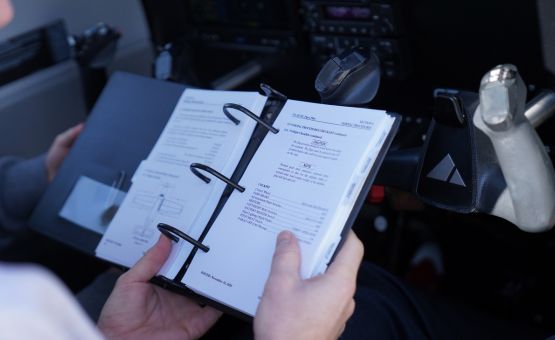By Chris Webb
So it’s been awhile? For most who’ve completed CFIA, CFII academy, or have a history of flying, we’ll rationalize this question with, “It’s like riding a bike.” “It’ll come back to you” “Your muscles will remember what to do.” These phrases are all fine and dandy, but that still doesn’t take away that nervous knot in your belly when you climb into an airplane for the first time in forever. If you follow 2 basic principles you will understand why these phrases can be true.
First: Follow the Pilots Operating Handbooks’ checklist. The manufacturer of your airplane has put countless number of research and test hours into design and safety. They also maintain and keep the public informed of new or learned procedures and training through Airworthiness Directives (Ads) and revisions. Following the approved checklist removes any and all of the guesswork out of flying. I get asked a lot on how I like to perform a maneuver, or what settings I like when landing. My answer is simple: what does it say in the checklist? By following what is in the checklist, my guess is kept to a minimum. The plane will be kept in a flight regime that the manufacturer approves.
Second: Ok, so HOW do you follow the checklist? I mean, it says to fly at a specific airspeed or a specific power configuration. This goes back to a fundamental skill called: Attitude + Power = Performance. Take for example, landings. The nose of the aircraft needs to be at a specific attitude, with a specific power setting, to fly the flight path appropriate for that aircraft. The checklist will give the power setting, flap setting and airspeed. All we need to do is set those items and then … monitor. There isn’t any other guesswork. Set the power, set the attitude (flaps and nose pitch) and then wait. Wait for a gust of wind or turbulence and correct it. For every basic flight turns and airspeed changes), there is a simple attitude and power setting. Set those, and wait.
So, it’s been awhile. Follow the checklist and set the attitude and power configuration. Then fix any deviation or bump that occurs. Remember, we are called Pilots. Not Fliers. We pilot a machine that ‘knows’ how to fly. Let the machine do the work.










